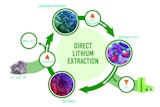EnOcean’s third generation of mechanical energy converters provide the foundation for a host of battery-free wireless applications.
The industry is experiencing a growing need for sensors, switches and devices that monitor the surrounding environment; for example, in industrial applications, the proximity of devices may need to be monitored for efficiency and sustainability reasons. These applications require sensors to monitor and report conditions that enable an automated system to make intelligent decisions based on the sensor data received.
In response to the market need for wireless sensors and switches that provide vital information, EnOcean is launching its third generation of mechanical energy converters. The ECO 200, paired with the PTM 330 transmitter module, enables speedy and simple implementation of energy-harvesting switching solutions.
Wired vs. Wireless
Traditionally, the sensors that provided information on the environmental conditions in a certain space were wired to a controller. “This meant that it was common to have multiple layers of wiring, one for electrical power, another for the information technology (IT) network, and a third layer for building monitoring,” says Jim O’Callaghan, president of EnOcean. “Pulling wires, especially to retrofit buildings, is expensive, invasive and restrictive in that the sensors could be placed only where one could reach them with a wire.”
Wireless sensors promised an alternative to pulling cables; however, they introduced the question of how to power the senor.
One option was to install a battery, but batteries presented challenges. Sensors have different energy budgets. One must choose when to replace a battery, e.g. based upon a prediction of when the first batteries will start to fail, or alternatively, to wait until a failure occurs. One must keep a stock of the various battery types, and have access to the space to change the battery. Many devices, such as occupancy sensors, are located on the ceiling, requiring a ladder to access. Additionally, batteries should be disposed of properly. This of course leads to the realization that batteries are cheap, but replacing them is not.
Because of these challenges, batteries have not been adopted as a mainstream alternative to “pulling the old wire,” thus generating the need for energy harvesting devices.
Energy Harvesting
Energy harvesting converts energy found in the surrounding environment into useful electricity that can power sensors to send a wireless signal as a command and control message, eliminating the need for providing a power or communication wire and the need for a battery.
With EnOcean’s ECO 200 energy converter and PTM 300 wireless module, a comprehensive system is created that entails multiple facets, including a switching technology that uses linear motion. From the motion of a simple press of a button, the ECO200 produces the energy needed to transmit wireless signals between devices, and the PTM 300, which is the electronic circuitry, translates the energy from the ECO 200 into a radio signal communicating a switch event.
“The PTM 330 transmits a signal, and then inside the thermostat or AC unit, there is a mating, receiving radio that retrieves and translates the signal to either turn the power on or off,” says O’Callaghan.
Highly Efficient Radio
The ECO 200 enables small forces and movements to be used effectively. The key to maintain low energy is to develop highly efficient radios that have long ranges, yet consume very little power. “To do that, we send radio communication very quickly, so the radio signals on and off the air in a thousandth of a second,” explains O’Callaghan.
Traditional radios have been designed with a power supply in mind, typically line power, therefore things such as minimizing energy consumption have not been as critical. An EnOcean module consumes approximately 1/10th of the amount of energy as a traditional, low-power RF node sensor device. Adoption of wireless energy harvesting has been so widespread that the technology has become an international standard: ISO/IEC 1454-3-10.
Light Force, Short Travel
The ECO 200 is designed to take physical motion and convert it into electronic energy. “One has to find a way to take a couple of millimeters of travel, and generate a significant enough pulse to pulse the radio,” says O’Callaghan.
There is a significant amount of engineering behind the ECO200 that, at its basic root, snaps a magnet through a copper coil, generating a pulse of energy. The size and placement of the magnet and the speed, at which it travels through the copper coil, must be optimized to generate and maximize the energy output.
The battery-less PTM 330 wireless module can be connected to the energy converter by spring contacts, and features four digital inputs to map up to four switching states. The PTM 330 has a unique 32-bit identification number to eliminate any overlap with other wireless sensors, and has a range up to 100 feet inside buildings, and 1,000 feet in open space.
By using energy harvesting wireless technology, devices can become maintenance-free and function without cabling, further reducing cost, while at the same time increasing sustainability and efficiency.
For more information, please visit www.enocean.com.























